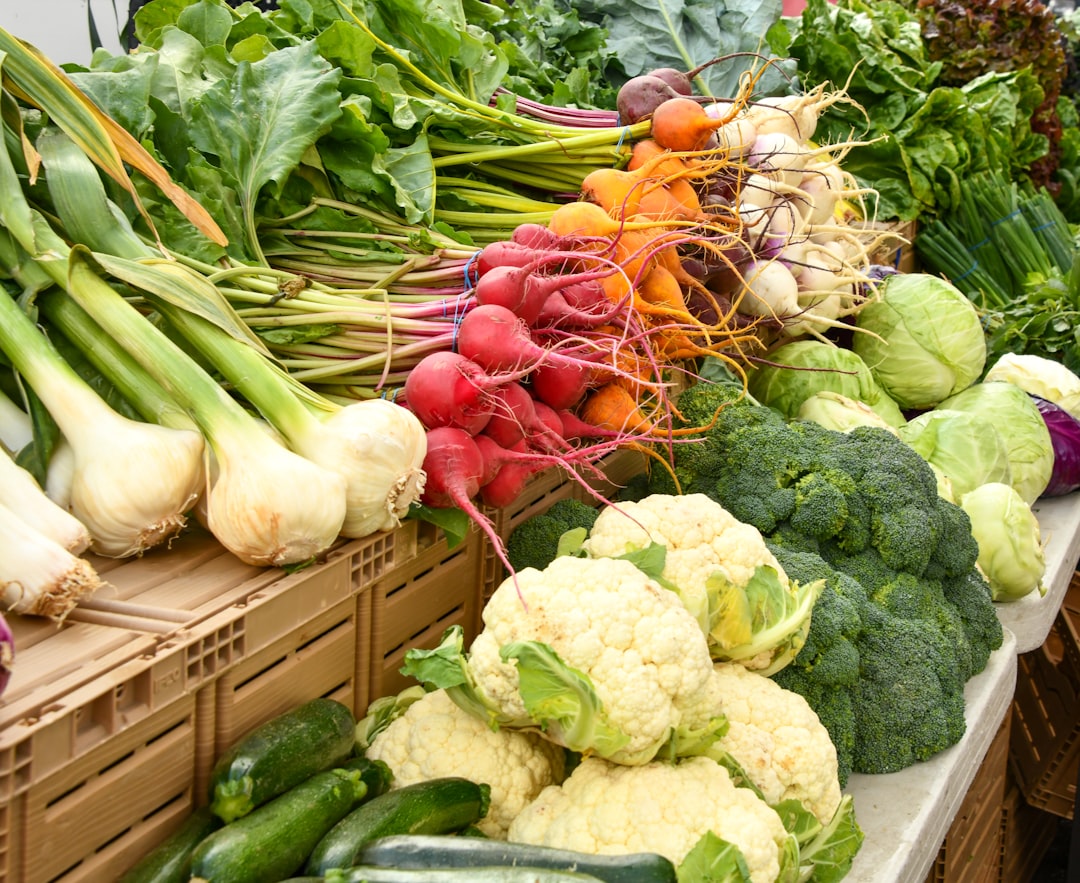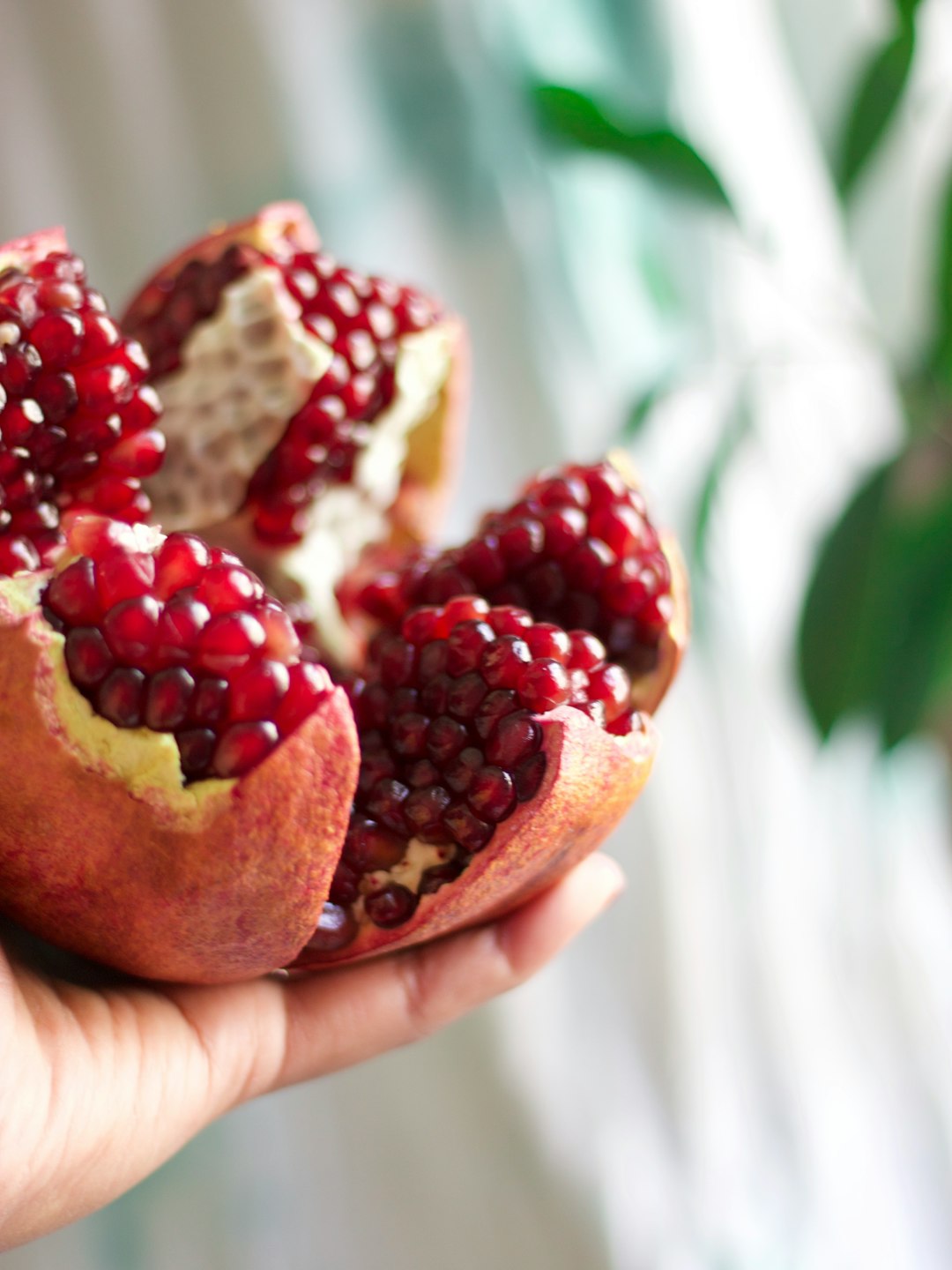Lymphedema, polyphenols, and Supplements I take - when not forgetful.
B vitamins, selenium, cysteine also likely needed to prevent lymphedema. EGCG inhibits VEGF. Pomegranate may help lymphedema along with other sources of polyphenols inc: quercetin, rutin & myricetin.
Gosh, golly, so hard to guess why I might feel worse when I don’t take my daily routine supplements, see lists below. I also had stopped a bunch of stuff while trying to figure out the salicylate and sulfate sensitivity issues. That may have eliminated too many things that were helping me including polyphenols like quercetin and amino acid powders like N-acetylcysteine.
*How to handle a complex supplement routine is the topic for another time, this post is focused on nutrients that may help lymphedema and I found one odd peptide that seems like a specific therapeutic for the issue. And is the price high (probably) and is it worth it? Seems like a big YES to my lymphedema and mood and muscle cramps.
Iodine and lymphedema as a search led to this lovely article:
Iodine, the secret weapon of hibernating ground squirrels and trauma patients New study reveals rare element’s primordial role in preventing inflammation-induced damage. OCT 1, 2020 • BY SABRINA RICHARDS / FRED HUTCH NEWS SERVICE.
What the ground squirrel article said about squirrels is that iodine is such a good antioxidant that it can help a hibernating animal survive the winter (along with some disinformation about rarity of iodine deficiency and adequacy of it in baked goods (not true) and dairy (more true). What it said about humans is that levels of iodine rapidly increase two to three times in trauma patients and massive doses can be given to heart attack patients safely. Iodine helps reduce tissue damage during inflammation and the body seems to have a protective mechanism to suddenly release iodine from thyroid hormone in response to trauma.
The reason the disinformation about iodine adequacy being more common than deficiency is important, is that - how can the body release iodine when needed for trauma response if the body is chronically low in iodine and hypothyroid patients are only treated with Synthroid rather than with iodine too?
*I’m going to pause on checking more nutrients and lymphedema research. This post already contains quite a lot of answers and just got too long for email with the iodine addition.

Salicylate and sulfate - what I learned to be bigger sources for me in a nutshell:
The biggest culprits for salicylate was likely my ground ivy salad dressing and wild berries and black cumin seed oil every day along with lots of thyme, rosemary, cumin, and other herbs or essential oils adding more. And in combination with being overly acidic and also likely low in glycine and omega 3, methyl folate and B12, vitamin B6 and zinc. I really, really need to take my supplements most days if not daily as they are genetic needs and being low in zinc and Bs impacts the omega 3 metabolism and detox of a variety of toxins.
The biggest culprit for my sulfur excess seems to have been the Epsom salt baths, I use MgCl now, and garlic. I typically used quite a bit plus cruciferous veggies and amino acid powders, cysteine, methionine, and lysine all have sulfur.
My supplement routine
I use weekly boxes that have four per day, approximately, take with breakfast, lunch, dinner and before bed. I was doing okay with that until adding the high dose niacin - the total solute load of supplements or from foods/beverages can become too much for the intestines and it leads to fairly immediate diarrhea. When severe this may be called dumping syndrome and it is part of the reason why it is important to add food back gradually after a long fast.
Box 1 - B vitamins mostly - I like to take them in the morning.
B1 - Benfotiamine - 300 mg
B2 - riboflavin - 100 mg
(B3 is not in the boxes, I aim for 1000 mg two to three times per day and usually take melatonin first ~ 10-20 mg of a powder.)
B6 - 200 mg
Methyl folate - 1000 mcg
B12 - methyl or hydroxy cobalamin - 5000 mcg
Choline - 250 mg
Inositol (x 2, also in box 3)
DHEA - 25 mg
A 1973 reference - has left me wondering what vitamin P is: “Both B-complex avitaminosis and P avitaminosis aggravate lymphedema in the rat. A member of the vitamin P family, coumarin (devoid of any antithrombotic activity) proved to be a highly active therapeutic agent against both forms of avitaminosis-aggravated lymphedemas.” (Földi-Börcsök, Földi, 1973) Interesting that coumarin helped but what form of coumarin is “devoid of antithrombotic activity”?. Vitamin K showed up in search results for “vitamin P coumarin”
Oooo, I found the answer in a 2020 article that looks at the history of “vitamin P”. A longer excerpt is after the rest of the box lists. Spoiler - I likely cut out too much of the healthy phytonutrients in foods and supplements that I was using, in the Elimination diet effort to figure out what was wrong with me. Some things got better, others got worse. Now I have to figure out what I should add back to my routine. These lists are missing a few things that I had been taking routinely.
Box 2 - minerals & fat soluble nutrients
Vit D3 - 1000 IU (25 mcg)
Vit K2 - 150 mcg
CoQ10 - 100 mg plus limonene in a mix - 100 mg
Calcium - 250 mg (mixed supplement has a little magnesium, zinc and vit D3 too)
Zinc - 50 mg *This is a high dose for average use - I am not average I have pyroluria which causes loss of zinc and B6 in the urine in amounts greater than diet alone can supply readily. **It is better to take zinc with meals to reduce digestive upset, and to not take it with other trace minerals as it can compete for absorption. I am not sure if taking it with the calcium is a bad idea.
Licorice x 2
Acetyl L Carnitine - 500 mg, x 2 - second one in box 4.
Box 3 - trace minerals and a few other things
Only Trace Minerals *does not have strontium, I ordered some of that as a separate supplement.
Selenocysteine - 200 mcg
“Selenium deficiency proved common in patients with lymphedema, lipedema, and lipo-lymphedema affecting 47.5% of the study population.” (Pfister, et al., 2020)
Venotone - 250 mg (silicon)
Vinpocetine - 10 mg *good for blood flow within the brain 0 cardiovascular and cognitive support.
Dong quai - herbal for female hormone support (I typically used Black Cohosh too but stopped when I was trying to cut down salicylate sources.)
Lysine - 500 mg (an amino acid)
Vit C - 100 mg chewable (except I am out, I need to buy some - eating pomegranate currently. It has some vitamin C.)
Box 4 - second B6 - the bioactive form
Pyridoxal - 100 mg - bioactive B6 (Pyridoxal is a little more expensive and the inactive form does seem to work for me. I may use whichever form, twice a day, depending on what I have on hand.)
CoQ10 - 100 mg
Magnesium glycinate - 400 mg
Licorice x 2 (adrenal support)
Inositol (second one)
Acetyl L carnitine (second one)
That may seem excessive, but I generally feel better when I am getting them in at least every other day.
Cysteine is a sulfur amino acid so I had stopped taking it but it is needed in a receptor that promotes repair of basement membranes of vessels which help prevent lymphedema.
“Of particular interest to our study, the basement membrane and specifically laminin which consists of α, β, and γ heterotrimeric chains. Laminin is a member of the cell adhesion proteins, which together with other macromolecules (i.e. structural proteins and glycosaminoglycans) form the extracellular matrix (ECM). In particular, laminin is essential for the complex functions of the basement membrane, which include acting as a mechanosensitive cellular anchorage site, a physical barrier, and a collector of signals [11]. Laminin play a key role in the junctional tightness between endothelial cells and the resulting vascular impermeability [12]. Without laminin β chain, laminin can neither accumulate nor basement membrane can form [13].
[…] Notably, the binding of 67LR to laminin β is mediated by the YIGSR sequence [18], which occurs in a cysteine-rich site of the laminin β short arm [19]. Thus, these studies together suggest that the 67LR-laminin β interaction mediated by YIGSR may attenuate lymphedema by promoting basement membrane repair and cell-cell adhesion, and that YIGSR peptide might have therapeutic benefits in this setting.” (Sakae, et al., 2023)
And, clear as mud (but = pomegranate would help as it modulates the p38 MAPK/ERK1 pathways, more on pomegranate and green tea for preventing lymphedema late in the post):
“TLDR It is suggested that 67LR-p38 MAPK/ERK1/2-PI3K-AKT-AQP4 signaling cascades may mediate serum extravasation and AQP4 expression in astroglio-vascular systems, which is one of the considerable therapeutic targets for vasogenic edema in various neurological diseases.” (Kim, et al., 2020)

What is “vitamin P”? - Plant flavonoids like quercetin, rutin, and myricetin.
“The term "vitamin P" is an old but interesting concept. Most substances in this category belong to the family of flavonoids. "Vitamin P" has also been used to define the activity of some flavonoids, including quercetin, myricetin, and rutin. According to experimental studies, the "quercetin-like natural plant flavonoids" are beneficial to the body due to their various physiological and pharmacological activities in large doses (5 μM in vitro, 50 mg/kg in mice and 100 mg/kg in rats).
The physiologically achievable concentration is 10 to 100 nM, which is quite high and hard to achieve from a normal diet. Thus, the physiologic activity and mechanism of "vitamin P" are still not clear.
It should be noted that the quercetin-like natural plant flavonoids are physiological co-factors of cyclooxygenases (COXs), which are the rate-limiting key enzymes of prostaglandins. These quercetin-like natural plant flavonoids can strongly stimulate prostaglandin levels at lower doses (10 nM in vitro and in 0.1 mg/kg in vivo in rats). Although these "vitamin P" substances are not original substances in the body, their physiological functions affect the body. This review is focused on the most compelling evidence regarding the physiologic role and mechanism of quercetin-like natural plant flavonoids, which may be useful in understanding the physiological functions of "vitamin P", with the goal of focusing on the role of flavonoids in human physiological health.” (Chen, et al., 2020)
Polyphenols include EGCG in green tea or pomegranate peel and other catechins. EGCG has been found to help reduce cutaneous edema during cancer treatments when used topically or taken as a supplement.
“3.5 Epigallocatechin-3-gallate
Epigallocatechin-3-gallate (EGCG), a major constituent of green tea, has been shown to protect from UV-induced skin cancers by inhibiting DNA damage and oxidative stress (Barthelman et al., 1998; Katiyar et al., 2007; Mittal et al., 2003) (Fig. 12.3). Experimentally, topical application of EGCG inhibited the reduction of antioxidants such as glutathione peroxidase and catalase in the epidermis, thereby protecting cells from oxidative stress (Katiyar et al., 2007; Mittal et al., 2003; Nihal et al., 2005). Studies have demonstrated that topical application or oral administration of EGCG reduced cutaneous edema and erythema and also decreased tumor incidence, multiplicity, and size (Lu et al., 2002; Mittal et al., 2003).
[…] Additional studies showed effective anti-angiogenic properties of EGCG, as this compound reduced the production of VEGF (Liu et al., 2001; Konta et al., 2011). Since EGCG is less expensive and has negligible toxicity, it is an attractive candidate chemopreventive agent; however, no clinical trials using EGCG have been reported, warranting further study.” (Madhunapantula, Robertson, 2012, excerpt viewable at ScienceDirect/EGCG)
Polyphenols/flavonoids have also been associated with reduced risk for dementia in aging. See this post: Big news, non CoV related - polyphenols linked to lower dementia risk, large human study (Substack)

Pomegranate paper excerpt about a daily intake goal being set for flavanols (EGCG type of catechins), a type of polyphenol.
A dietary recommendation has been made by an advisory panel of the Academy for Nutrition and Dietetics for a daily intake goal for flavanols from foods of 400/600 mg/day. This amount may benefit cardiometabolic health. Tea, apples, berries are mentioned as sources. (Crowe-White, et al, 2022) Pomegranate is a source of flavanols, and was a better source of gallocatechins than other Spanish foods tested. (de Pascual-Teresa, et al, 2000)
Polyphenols and structured water
Polyphenols and other phytonutrients can help keep proteins folded in the right shape by stabilizing electrical fields. Polyphenols also promote the organization of structured water in exclusion zones of greater or lesser negative charge. The +H protons flow more rapidly than the -OH ions and are attracted to and align along the edges of the negatively charged proteins found in body fluids. Various posts on structured water: (Dave Asprey & yak butter tea post)(Structured water supports growth better than tap - my own experiment with really old active dry yeast used for baking bread, post) (Gerald Pollack & structured water, post 1, post 2)
The “vitamin P” information supports my theory that something was going wrong with my internal structured water. Vitamin “polyphenols” would be helping to stabilize proteins within the cellular fluid. Polyphenols promote structuring of water and that is why the “infrared space heater suntea” was ready sooner than the diatomaceous earth water jugs. (previous post)
Trial and error means you try stuff until you quit making so many errors. ;-) It is a work in progress.
Disclaimer: This information is being provided for educational purposes within the guidelines of Fair Use and is not intended to provide individual health care guidance.
Reference List
(Chen, et al., 2020) Chen W, Wang S, Wu Y, Shen X, Xu S, Guo Z, Zhang R, Xing D. The Physiologic Activity and Mechanism of Quercetin-Like Natural Plant Flavonoids. Curr Pharm Biotechnol. 2020;21(8):654-658. doi: 10.2174/1389201021666200212093130. PMID: 32048963.
(Földi-Börcsök, Földi, 1973) Ethel Földi-Börcsök, M. Földi, (1973), Lymphedema and vitamins, The American Journal of Clinical Nutrition, 26(2);185-190, ISSN 0002-9165, https://doi.org/10.1093/ajcn/26.2.185. https://www.sciencedirect.com/science/article/pii/S0002916523332246
(Kim, et al., 2020) Kim, J., Park, H., Lee, J., & Kang, T. (2020). Blockade of 67-kDa Laminin Receptor Facilitates AQP4 Down-Regulation and BBB Disruption via ERK1/2-and p38 MAPK-Mediated PI3K/AKT Activations. Cells, 9. https://www.semanticscholar.org/paper/Blockade-of-67-kDa-Laminin-Receptor-Facilitates-and-Kim-Park/b0321f30fec02c7eb5da9157c0f34c3ad859c79d
(Madhunapantula, Robertson, 2012) SubbaRao V. Madhunapantula, Gavin P. Robertson, Chapter Twelve - Chemoprevention of Melanoma, Editor(s): Keiran S.M. Smalley, Advances in Pharmacology, Academic Press, 65;361-398, 2012, ISSN 1054-3589, ISBN 9780123979278, https://doi.org/10.1016/B978-0-12-397927-8.00012-9. https://www.sciencedirect.com/science/article/pii/B9780123979278000129, viewable at ScienceDirect/EGCG)
(Pfister, et al., 2020) Pfister C, Dawczynski H, Schingale FJ. Selenium Deficiency in Lymphedema and Lipedema-A Retrospective Cross-Sectional Study from a Specialized Clinic. Nutrients. 2020 Apr 25;12(5):1211. doi: 10.3390/nu12051211. PMID: 32344864; PMCID: PMC7281982. https://www.ncbi.nlm.nih.gov/pmc/articles/PMC7281982/
(Sakae, et al., 2023) Y. Sakae, H. Takada, S. Ichinose, M. Nakajima, A. Sakai, R. Ogawa, Treatment with YIGSR peptide ameliorates mouse tail lymphedema by 67 kDa laminin receptor (67LR)-dependent cell-cell adhesion, Biochemistry and Biophysics Reports, Vol 35, 2023, 101514, ISSN 2405-5808, https://doi.org/10.1016/j.bbrep.2023.101514. https://www.sciencedirect.com/science/article/pii/S240558082300095X
Additional links
(Hablitz, et al., 2020) Hablitz, L.M., Plá, V., Giannetto, M. et al. Circadian control of brain glymphatic and lymphatic fluid flow. Nat Commun 11, 4411 (2020). https://doi.org/10.1038/s41467-020-18115-2 https://www.nature.com/articles/s41467-020-18115-2 Thank you for reading deNutrients - News to Use. This post is public so feel free to share it.



great stuffs and thanks for sharing your supplement list!
i have added pomegranate fruit in my daily diet :) atleast 1 or two ..
what is your opinion on a combination of vinpocetine with ginkgo and piracitam? also recently i discovered that Niacin with Gaba and B1( at night) does wonderful job too! Niacin amuses me every other day with various combinations!!
Wow, there's a lot in there to consider.
AQP4 is aquaporin-4, it regulates the water and metabolite balance of glial cells & the spinal cord. Autoimmune antibodies can target it, which makes pomegranate of interest to avoid neuropathies.
And we can probably guess why "they" don't want flavonoids & polyphenols classed as vitamins. It would put half the pharma companies out of business in a few years;-)